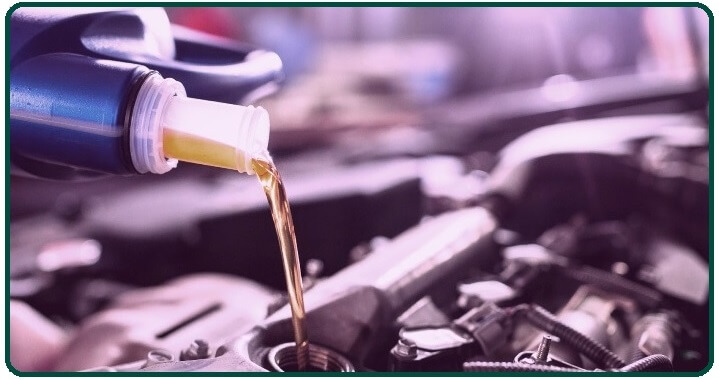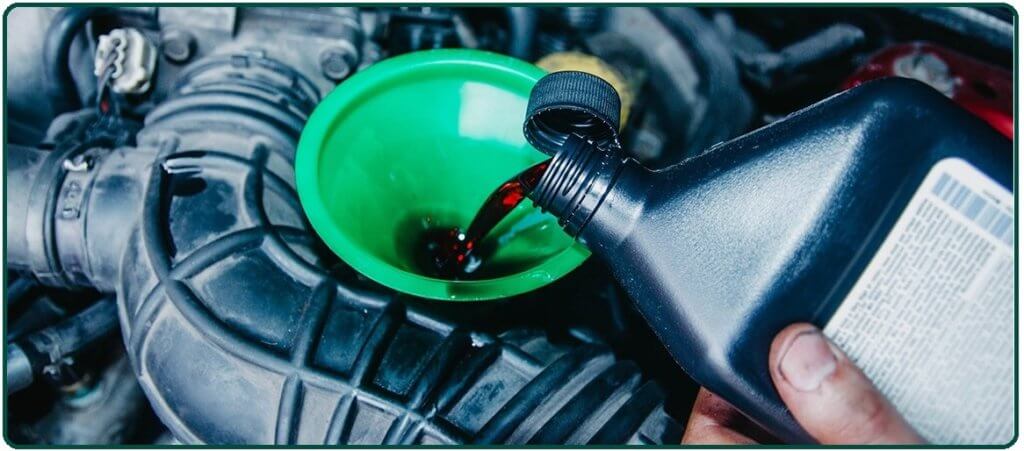
How to Change Transmission Fluid?

If you’re the DIY types who like to do all of your car maintenance, you may be wondering how you can replace the fluid in your transmission on your own.
Fortunately, it’s not as difficult as it seems. The exact process depends on whether you plan to do simple changes or a flush. We’ll provide step-by-step instructions for both methods here.
#1. Standard Fluid Change
Before your begin, be sure to read all steps and make sure you have the necessary tools and skills to perform this transmission service.
Otherwise, you could be in for a lot of trouble as you could cause permanent damage to your vehicle’s transmission. Before getting started, makes sure your car is supported with a jack stand. Never get under cars that are not supported properly.
Once you’re sure it’s secure, climb down and locate the pan on the bottom of the transmission. Look & see if it has a drain plug. If it does, your job is a lot easier! Simply remove the drain plug & let the fluid drain into a pan or bucket. If there isn’t a drain plug, then things have to get a little messy.
You have to remove the pan so that the liquid can drain. Remove the screw from one side of the pan first. Be prepared because the fluid will start to flow out as soon as you start to remove the screw.
Once you remove the screw from one side, loosen the screw from the other side so that you can tilt the pan down a bit and allow the liquid to drain out.
Once the drainage slows down, go ahead and unscrew the screws on the other side to allow the pan to be removed. Be careful, as it can be quite messy. If your transmission has a replaceable filter, go ahead & replace it with a new filter.
Now, you’ll need to remove the old gaskets from the mating surface on the pan and on the bottom of the transmission. Be sure to remove all pieces and keep surfaces as clean as possible. Otherwise, you won’t get a good seal, and fluid will leak out after changing the pan.
Go ahead & install the new gasket, set the pan in place, and thread the screw back into the pan. Before tightening them, refers to your owner’s manual or repair manual for the proper tightening sequence and torque specs.
Once you’ve replaced the pan, you’ll need to fill the transmission with new fluid. Since not all of the old fluid will drain out of the system, only pour about 60% of the fluid capacity.
Check the fluid level, & top it up if necessary. Congratulations, you just changed your transmission fluid! If you’ve decided to do a fluid flush instead, keep reading for instructions.
#2. Fluid Flush
First, you’ll need to locate the transmission cooler lines where they enter and exit the radiator. It will probably be somewhere near where your coolant lines run in and out of your radiator. Remove the line exiting the transmission and place it in a bucket.
Go ahead and place the funnel in the filler neck and be ready to start pouring new fluid into the funnel. The next steps move quickly, so make sure you’re prepared.
Start the car engine, and the old fluid will begin to pump from the cooler line into your bucket. At the same time, go ahead & start pouring new fluid into your funnel.
Make sure you don’t run it dry, as this can be harmful to your transmission. Once you have put about 70% of fluid capacity back in the funnel, go ahead and turn off the engine.
Replace the transmission cooler line. Check fluid level & top off if necessary. You just flushed transmission fluid into your vehicle.
How to Replace Transmission Fluid:
The way to drain the transmission fluid is to work from above, draining the old fluid through the filler tube. Then fill with fresh liquids. A hand-operated vacuum transmission fluid pump simplifies and cleans up the job. You can remove a third to half of the fluid from the transmission at once.
The rest will be in the torque converter and transmission cooler. So do the process thrice at an interval of a week to replace almost all the old fluid. The little remaining old fluid will be diluted with lots of fresh new fluid.
Some manufacturer recommends replacing filters each time you changes the transmission fluid. Go with what your dealership recommends. Note: But if your transmission pans are leaking, you should either “drop” the pan and replaces the gaskets or take it in for service.
Why Change Transmission Fluid?

Changing your transmission fluid frequently is the bests way to ensure the maximum longevity of your transmissions. If you don’t change your transmission fluid frequently, the dirty fluid won’t work as an effective lubricant, and it won’t dissipate heat well.
These will cause wear & tear on the clutch and other parts of your transmission. Once the clutch pack loses its grip, the old fluid itself may be creating enough friction to engage your clutch and prevent your transmission from slipping.
Prevent damages to your transmission by making sure your transmission fluid is changed or flushed according to the owner’s manuals.
You can also refer to the owner of the manuals to find out what type of transmission fluid your car carries, as there is a wide variety on the market with different viscosities.
Checking Your Transmission Fluid:
You check your engine oil level, right? And you get your engine oil changed, don’t you? Well, you should also have your transmission fluid checked as part of your car maintenance program.
It’s a very similar process: Take out the transmission dipstick, clean it with a lint-free rag or paper towel, place the dipstick back in the dipstick tube, & pull it back out to see a clear reading of the fluid levels. If your vehicle doesn’t have transmission dipsticks, don’t worry.
Refer to the owner’s manual to find out when the fluid and transmission filter should be replaced and when you should flush the transmission. Common recommendations are about every 20,000 to 25,000 miles, but this may need to be replaced sooner, depending on your vehicle.
The major difference between a transmission fluid and an oil check is that you will actually be checking the transmission fluid while the car is running. Just remember to put it in neutral or park, and set the parking brake for safety.
If the fluid level falls below the minimums line on the dipstick, you’ll need to add more or do transmission fluid changes; keep reading to learn how.
Check your owner’s manuals to see which type is recommended for your vehicle. Like any mechanical fluid, be sure to keep hazardous materials in lockups away from children and animals. You will also want to check the consistency of the liquid, which should be clear with a pink tint.
If the fluid condition looks dirty, it may be a good idea to have the fluid flushed and get a fluid exchange. If you want to change your vehicle’s transmission fluid yourself, keep reading these step-by-step guides on how to gets rid of that’s old fluid & get some fresh fluid through your car.
What Is a Transmission Fluid Flush?
A transmission fluid change is pretty standard. However, there is a time when you may want to consider a complete transmission fluid flush. This is a separate service, but it may be necessary if the fluid running through your entire system is completely bad.
Think of a fluid flush like a complete blood transfusion, where all the fluid is taken out and completely replaced, not just what’s in the reservoir tank. Typically, cleaning solutions are pumped through the system during the flush process to remove any excess built-up fluid or grime.
Then, it is replaced with all new fluids. Naturally, transmission fluid flush is a more intensive process and will be more expensive, partly because 2-3 times as much fluid is usually needed to refill the entire system compared to 5-7 quarts. In 12-22 quarts. Before you consider a transmission fluid flush, however, consult an expert.
These are not something you want to do unless absolutely necessary. And if it is necessary, it is likely due to other transmission problems that you will want to inspect and repair at the same time. Otherwise, you risk facing similar fluid issues.
Transmission Fluid Maintenance:
That said, you can and should regularly check your transmission fluid using a dipstick different from the regular oil dipstick in your car. If the liquid is red in color & has a sweet smell, it is still in good condition. Top off the liquid as needed.
If it’s dark or has a burnt smell, it could be a sign of a bigger transmission problem, and you’ll want to get it checked out.
In addition to replacing only the filter and fluid, a standard transmission service will include an external inspection of other major transmission components, such as the pan gasket and transmission pan.
You will want to make sure that all seals are good and that no leaks are taking place. The transmissions are one of the most important components of your car, so you always want to keep it running as well as possible.
FAQ: Changing Transmission Fluid
Why should I change my transmission fluid?
Changing your transmission fluid frequently ensures maximum longevity of your transmission. Dirty fluid won’t work as an effective lubricant and won’t dissipate heat well, causing wear and tear on the clutch and other parts of your transmission.
How often should I change my transmission fluid?
Common recommendations are to change transmission fluid every 20,000 to 25,000 miles. However, this may vary depending on your vehicle. Always refer to your owner’s manual for specific guidelines.
What tools do I need to change my transmission fluid?
Basic tools required include a jack stand, a pan or bucket for draining old fluid, a new filter (if applicable), a funnel, and new transmission fluid. For a fluid flush, you’ll also need a hand-operated vacuum transmission fluid pump.
How do I check my transmission fluid level?
To check the transmission fluid level, remove the dipstick, clean it with a lint-free rag or paper towel, reinsert it, and then pull it out again to read the fluid level. Ensure the car is running and in neutral or park with the parking brake set.
What should I do if my transmission fluid looks dirty or smells burnt?
If the transmission fluid is dark or has a burnt smell, it could indicate a bigger transmission problem. In such cases, it’s advisable to have the fluid flushed and the transmission inspected by a professional.
Can I change my transmission fluid if my vehicle doesn’t have a drain plug?
Yes, if your vehicle doesn’t have a drain plug, you’ll need to remove the pan to drain the fluid. This process can be messy, so be prepared to manage the fluid as it drains.
How much new transmission fluid should I add after a standard fluid change?
Since not all of the old fluid will drain out of the system during a standard fluid change, pour about 60% of the fluid capacity initially. Check the fluid level and top it up as necessary.
What is a transmission fluid flush, and when should I consider it?
A transmission fluid flush involves removing all the old fluid and replacing it with new fluid, often including a cleaning solution to remove built-up grime. It is more intensive and should be considered if the fluid is completely bad or if recommended by a professional.
Do I need to replace the transmission filter when changing the fluid?
Some manufacturers recommend replacing the filter each time you change the transmission fluid. Check your vehicle’s maintenance guidelines or consult your dealership for specific recommendations.
Can I perform a transmission fluid change on my own?
Yes, if you have the necessary tools and skills, you can change your transmission fluid yourself by following the step-by-step instructions provided. However, if you are unsure, it’s best to consult a professional to avoid causing damage to your vehicle.

